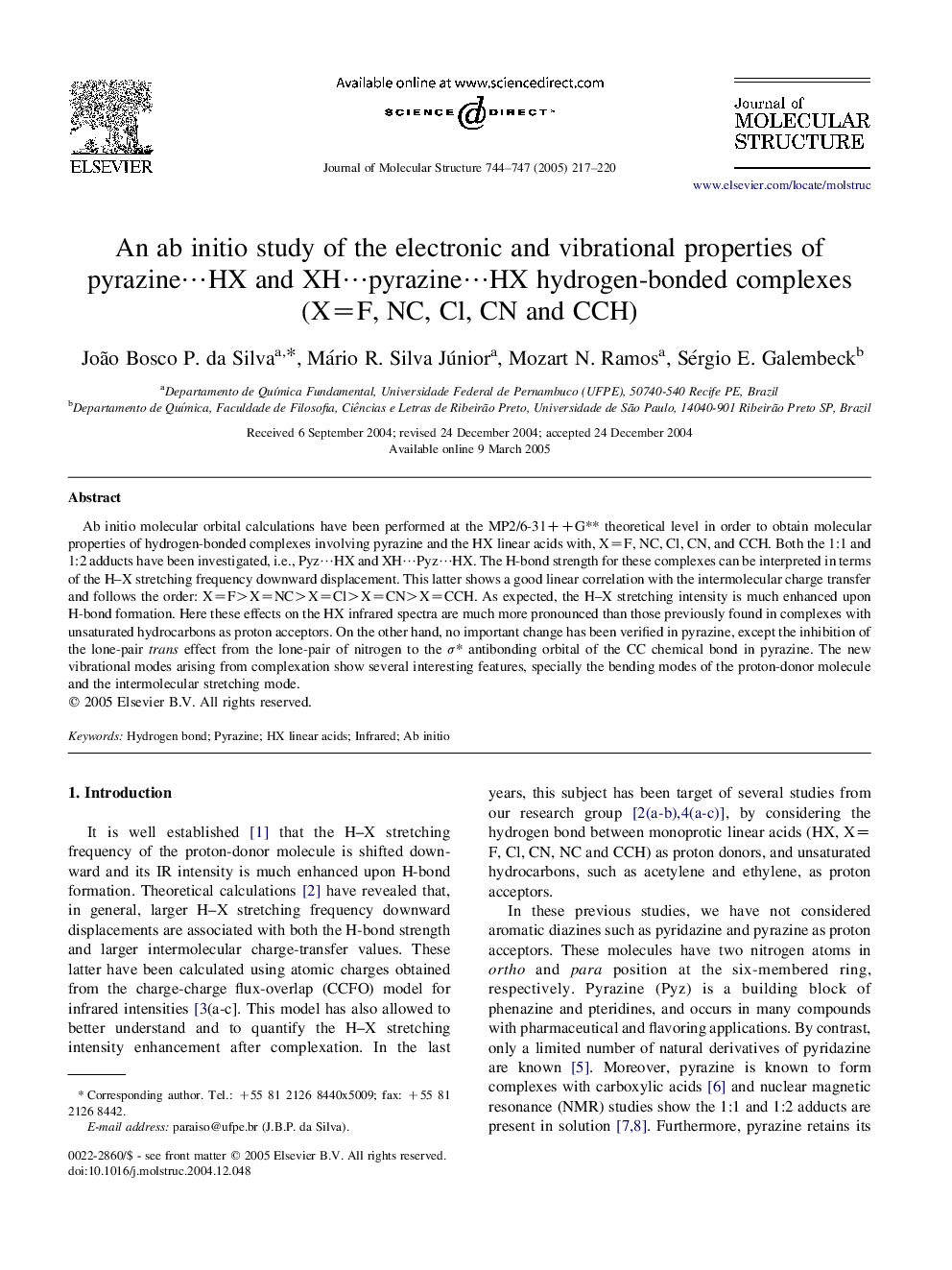| Article ID | Journal | Published Year | Pages | File Type |
|---|---|---|---|---|
| 9770060 | Journal of Molecular Structure | 2005 | 4 Pages |
Abstract
Ab initio molecular orbital calculations have been performed at the MP2/6-31++G** theoretical level in order to obtain molecular properties of hydrogen-bonded complexes involving pyrazine and the HX linear acids with, X=F, NC, Cl, CN, and CCH. Both the 1:1 and 1:2 adducts have been investigated, i.e., Pyzâ¯HX and XHâ¯Pyzâ¯HX. The H-bond strength for these complexes can be interpreted in terms of the H-X stretching frequency downward displacement. This latter shows a good linear correlation with the intermolecular charge transfer and follows the order: X=F>X=NC>X=Cl>X=CN>X=CCH. As expected, the H-X stretching intensity is much enhanced upon H-bond formation. Here these effects on the HX infrared spectra are much more pronounced than those previously found in complexes with unsaturated hydrocarbons as proton acceptors. On the other hand, no important change has been verified in pyrazine, except the inhibition of the lone-pair trans effect from the lone-pair of nitrogen to the Ï* antibonding orbital of the CC chemical bond in pyrazine. The new vibrational modes arising from complexation show several interesting features, specially the bending modes of the proton-donor molecule and the intermolecular stretching mode.
Related Topics
Physical Sciences and Engineering
Chemistry
Organic Chemistry
Authors
João Bosco P. da Silva, Mário R. Silva Júnior, Mozart N. Ramos, Sérgio E. Galembeck,
